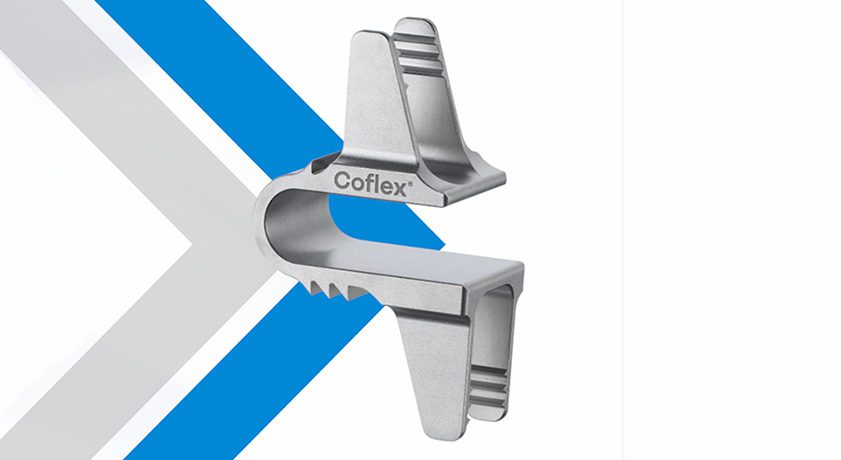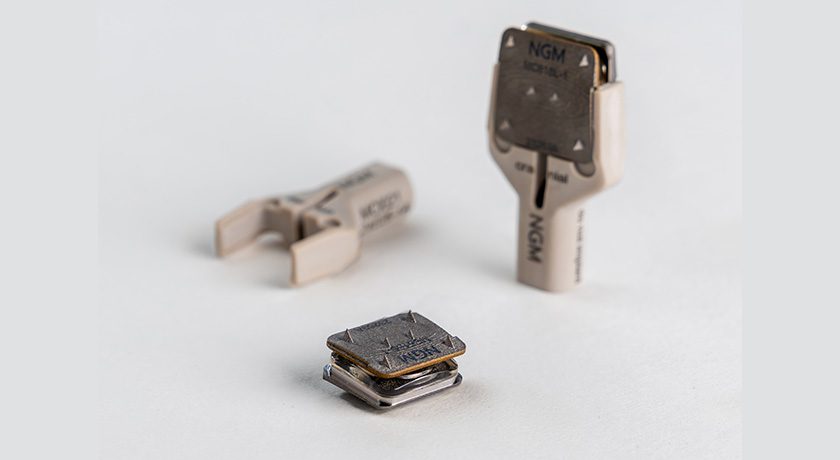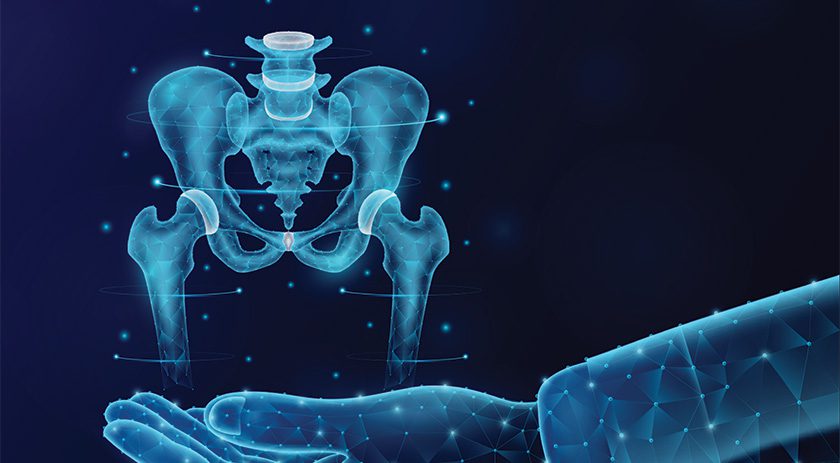

 Copy to clipboard
Copy to clipboard 
Leading spine companies are increasingly reliant on enabling technology to drive share gains. Below, we’ll examine the various technologies used in spine surgery, shifting perspectives on their strategic importance and the next wave of tech that could spur mass market adoption.
Tech’s Place in Spine Surgery
Enabling technologies aim to produce better patient outcomes by improving implant alignment accuracy and fit while limiting surgical variability. Those goals make technology an excellent fit for spine surgery, where revision rates can be high.
“One of the great misnomers in spine is that it’s commoditized,” said Pat Miles, ATEC CEO. “If something is commoditized, oftentimes, there’s great predictability associated with it. When you see a 10% to 15% revision rate in one to three years in degenerative surgery, I would say that that’s not a predictable environment.”
Technology’s role in spine surgery starts with imaging, where Medtronic’s O-arm is the leading mobile CT unit on the market. Globus Medical’s Excelsius3D is a multi-purpose intra-operative imaging system that has driven growth for the company in recent years. ATEC’s EOS pre-operative imaging system can significantly reduce a patient’s radiation exposure.
Imaging can be used to create a pre-operative surgical plan, where artificial intelligence can drive more predictable results. Medtronic’s UNID ASI planning software, acquired from Medicrea in 2020, leverages data from thousands of spine procedures to model multiple surgical scenarios for the surgeon. Pre-op imaging can also facilitate the creation of patient-specific implants like aprevo from Carlsmed.
During the procedure, navigation systems help improve implant alignment and fit. Navigation is the most crowded portion of the enabling technology market. Competing systems in spine include Stryker’s Q Guidance, Medtronic’s StealthStation, NuVasive’s Pulse platform, Orthofix’s 7D system and a host of companies entering the augmented reality space. Navigated robotics is currently a two-company race in spine, with Globus Medical’s ExcelsiusGPS and Medtronic’s Mazor X Stealth essentially neck and neck in terms of capability and features.
A Must-Have to Compete at the Top
Spine’s long-running move toward technology accelerated palpably coming out of the pandemic, as more device companies shifted disproportionate investment dollars toward digital initiatives. Medtronic has said that the spine industry is being redefined by enabling technology.
While opportunities still abound for traditional metal and plastic companies in spine, a robust technology ecosystem is crucial to competing in the market’s upper echelon, where Medtronic and Globus reign supreme.
Stryker has been the gold standard in orthopedics for the last several years, but the company hasn’t been able to replicate that success in the spine segment since its late 2018 acquisition of K2M. According to the company, the lack of a spine robot limits its growth potential to the low-single-digit industry average. Stryker pushed back its shoulder arthroplasty robot to prioritize the launch of Mako Spine.
“The launch of Mako Spine is going to be critical,” said Kevin Lobo, Stryker CEO. “We had a gap with enabling technologies, which is important in the spine segment. [2023] will be a year where we will continue to grow around the market growth rate and then get ready for the Mako launch to start to grow above market.”
The landscape could be very different when Mako Spine hits the market in 2024. Globus Medical recently closed its merger with NuVasive, creating a clear number two player in the spine market with nearly 17% share.
The company faces a complex, multi-year integration effort, but the merger creates a compelling opportunity for Globus’ enabling technology sales. Globus has largely escaped the rental pressure faced by its peers in the industry. The below exhibit shows Globus Medical’s historical quarterly enabling technology sales.
Less clear is what happens to NuVasive’s Pulse platform, which combines several technologies such as surgical planning, neuromonitoring, navigation and rod bending. The company reported a pull-back in Pulse placements in the lead-up to the merger close, attributing it to pre-deal jitters. Given Globus’ investment and success with its technology, we expect parts of Pulse to be repurposed for the Excelsius ecosystem.
Opportunities to Accelerate Adoption
Despite its strategic importance to device companies, enabling technology usage is low in spine surgery. Less than 20% of spinal fusion procedures use navigation, while robotic procedures in spine are in the low single digits.
Top-of-the-line systems from Medtronic, Globus and Stryker come with hefty price tags (or, these days, significant volume commitments) and a steep learning curve. It is hard to imagine these systems breaking through to mass market adoption. Instead, we could see more accessible technologies cross the gap first.
Augmented reality navigation systems give the surgeon real-time data while reducing the need to look away from the patient. They represent a cost and space-effective navigation option that removes some traditional barriers to adoption. Augmedics’ xvision system, for example, offers a custom-fitted headset that boasts a high degree of accuracy for pedicle screw placement. The company also recently won bidding for the digital health assets of the now-defunct Surgalign in court-supervised proceedings.
The push for a smaller footprint and lower cost also impacts robotics. ATEC recently purchased the REMI robotic system from Accelus. REMI is a handheld system that costs about half of Globus’ robot and can be set up in about 15 minutes, offering substantial time savings. In the short term, ATEC is focused on getting its implants cleared for use with the robot. By 2025, the company plans to integrate the technology into its procedural solutions.
Finally, post-operative monitoring technologies could be a massive value-add for surgical teams. Canary Medical is measuring critical metrics from implanted devices to inform better decision-making. Its partnership with Zimmer Biomet on the PersonaIQ smart knee is building a significant trove of data to drive recovery curves that help surgeons more effectively monitor their patients. Canary Medical and companies like it, including Intelligent Implants and DirectSync Surgical, could soon bring similar benefits to spine surgeons with implantable sensors.
Enabling technologies have incredible potential in spine surgery and orthopedics in general. They are more critical than ever in driving share gains among the top companies in the market. But surgeon users still face frustrating obstacles while hospitals and ASCs contend with space and cost constraints for flagship systems. We believe more accessible technologies like AR/VR navigation and remote monitoring tools will help technology cross the gap to mass adoption in spine in the coming years.
Leading spine companies are increasingly reliant on enabling technology to drive share gains. Below, we’ll examine the various technologies used in spine surgery, shifting perspectives on their strategic importance and the next wave of tech that could spur mass market adoption.
Tech’s Place in Spine Surgery
Enabling technologies aim to...
Leading spine companies are increasingly reliant on enabling technology to drive share gains. Below, we’ll examine the various technologies used in spine surgery, shifting perspectives on their strategic importance and the next wave of tech that could spur mass market adoption.
Tech’s Place in Spine Surgery
Enabling technologies aim to produce better patient outcomes by improving implant alignment accuracy and fit while limiting surgical variability. Those goals make technology an excellent fit for spine surgery, where revision rates can be high.
“One of the great misnomers in spine is that it’s commoditized,” said Pat Miles, ATEC CEO. “If something is commoditized, oftentimes, there’s great predictability associated with it. When you see a 10% to 15% revision rate in one to three years in degenerative surgery, I would say that that’s not a predictable environment.”
Technology’s role in spine surgery starts with imaging, where Medtronic’s O-arm is the leading mobile CT unit on the market. Globus Medical’s Excelsius3D is a multi-purpose intra-operative imaging system that has driven growth for the company in recent years. ATEC’s EOS pre-operative imaging system can significantly reduce a patient’s radiation exposure.
Imaging can be used to create a pre-operative surgical plan, where artificial intelligence can drive more predictable results. Medtronic’s UNID ASI planning software, acquired from Medicrea in 2020, leverages data from thousands of spine procedures to model multiple surgical scenarios for the surgeon. Pre-op imaging can also facilitate the creation of patient-specific implants like aprevo from Carlsmed.
During the procedure, navigation systems help improve implant alignment and fit. Navigation is the most crowded portion of the enabling technology market. Competing systems in spine include Stryker’s Q Guidance, Medtronic’s StealthStation, NuVasive’s Pulse platform, Orthofix’s 7D system and a host of companies entering the augmented reality space. Navigated robotics is currently a two-company race in spine, with Globus Medical’s ExcelsiusGPS and Medtronic’s Mazor X Stealth essentially neck and neck in terms of capability and features.
A Must-Have to Compete at the Top
Spine’s long-running move toward technology accelerated palpably coming out of the pandemic, as more device companies shifted disproportionate investment dollars toward digital initiatives. Medtronic has said that the spine industry is being redefined by enabling technology.
While opportunities still abound for traditional metal and plastic companies in spine, a robust technology ecosystem is crucial to competing in the market’s upper echelon, where Medtronic and Globus reign supreme.
Stryker has been the gold standard in orthopedics for the last several years, but the company hasn’t been able to replicate that success in the spine segment since its late 2018 acquisition of K2M. According to the company, the lack of a spine robot limits its growth potential to the low-single-digit industry average. Stryker pushed back its shoulder arthroplasty robot to prioritize the launch of Mako Spine.
“The launch of Mako Spine is going to be critical,” said Kevin Lobo, Stryker CEO. “We had a gap with enabling technologies, which is important in the spine segment. [2023] will be a year where we will continue to grow around the market growth rate and then get ready for the Mako launch to start to grow above market.”
The landscape could be very different when Mako Spine hits the market in 2024. Globus Medical recently closed its merger with NuVasive, creating a clear number two player in the spine market with nearly 17% share.
The company faces a complex, multi-year integration effort, but the merger creates a compelling opportunity for Globus’ enabling technology sales. Globus has largely escaped the rental pressure faced by its peers in the industry. The below exhibit shows Globus Medical’s historical quarterly enabling technology sales.
Less clear is what happens to NuVasive’s Pulse platform, which combines several technologies such as surgical planning, neuromonitoring, navigation and rod bending. The company reported a pull-back in Pulse placements in the lead-up to the merger close, attributing it to pre-deal jitters. Given Globus’ investment and success with its technology, we expect parts of Pulse to be repurposed for the Excelsius ecosystem.
Opportunities to Accelerate Adoption
Despite its strategic importance to device companies, enabling technology usage is low in spine surgery. Less than 20% of spinal fusion procedures use navigation, while robotic procedures in spine are in the low single digits.
Top-of-the-line systems from Medtronic, Globus and Stryker come with hefty price tags (or, these days, significant volume commitments) and a steep learning curve. It is hard to imagine these systems breaking through to mass market adoption. Instead, we could see more accessible technologies cross the gap first.
Augmented reality navigation systems give the surgeon real-time data while reducing the need to look away from the patient. They represent a cost and space-effective navigation option that removes some traditional barriers to adoption. Augmedics’ xvision system, for example, offers a custom-fitted headset that boasts a high degree of accuracy for pedicle screw placement. The company also recently won bidding for the digital health assets of the now-defunct Surgalign in court-supervised proceedings.
The push for a smaller footprint and lower cost also impacts robotics. ATEC recently purchased the REMI robotic system from Accelus. REMI is a handheld system that costs about half of Globus’ robot and can be set up in about 15 minutes, offering substantial time savings. In the short term, ATEC is focused on getting its implants cleared for use with the robot. By 2025, the company plans to integrate the technology into its procedural solutions.
Finally, post-operative monitoring technologies could be a massive value-add for surgical teams. Canary Medical is measuring critical metrics from implanted devices to inform better decision-making. Its partnership with Zimmer Biomet on the PersonaIQ smart knee is building a significant trove of data to drive recovery curves that help surgeons more effectively monitor their patients. Canary Medical and companies like it, including Intelligent Implants and DirectSync Surgical, could soon bring similar benefits to spine surgeons with implantable sensors.
Enabling technologies have incredible potential in spine surgery and orthopedics in general. They are more critical than ever in driving share gains among the top companies in the market. But surgeon users still face frustrating obstacles while hospitals and ASCs contend with space and cost constraints for flagship systems. We believe more accessible technologies like AR/VR navigation and remote monitoring tools will help technology cross the gap to mass adoption in spine in the coming years.

You are out of free articles for this month
Subscribe as a Guest for $0 and unlock a total of 5 articles per month.
You are out of five articles for this month
Subscribe as an Executive Member for access to unlimited articles, THE ORTHOPAEDIC INDUSTRY ANNUAL REPORT and more.
ME
Mike Evers is a Senior Market Analyst and writer with over 15 years of experience in the medical industry, spanning cardiac rhythm management, ER coding and billing, and orthopedics. He joined ORTHOWORLD in 2018, where he provides market analysis and editorial coverage.







